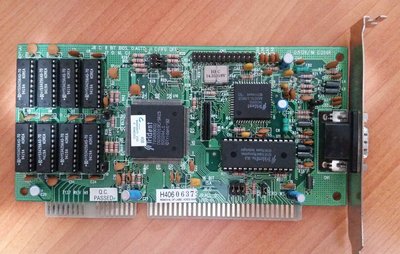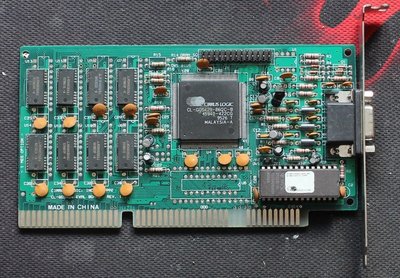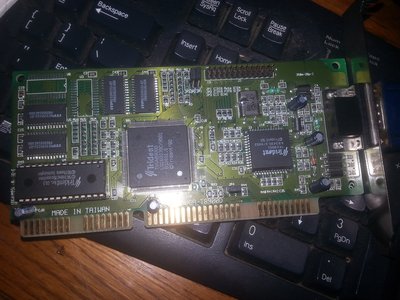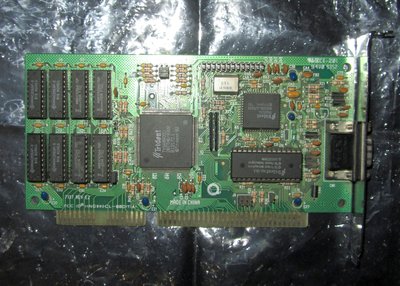First post, by InbetweenDays
- Rank
- Newbie
Hi all,
First post here and very glad to have found such a great site as this - previous posts and the driver library have already been invaluable.
I've been on a bit of a retro trip lately, reliving my uni days and playing old games on old hardware instead of dosbox on an i5. I've got a 486DX266 - all ISA not VLB, with 20MB RAM, a Trident 8900D 1MB, and SB32.
Since the 8900 cards have a reputation for being slow, I decided to get something better. After some research, following recommendations here and Vlask's VGA museum posts & benchmarks, I bought a Cirrus Logic CL-GD5429 (1MB). This card should be one of the fastest ISA cards available. However my own benchmarks (using the DOSBench suite) have shown the Trident card to be significantly better. I repeated them on a faster machine (6x86 120 w/32MB) with the same conclusion. For example, some numbers from the 6x86:
Superscape v1.0c (3DBench2) - 48.7 for the CL vs 57.4 for the Trident.
Cris's 3D benchmark 640x480 - 9.7 vs 11.5
Quake timedemo 320x240 - 13.7 vs 14.5
I've just spied on Vlask's Quake 320 benchmarks though that the 8900CL-C performed on par with a Cirrus 5428, so perhaps the later revisions are better and my 8900D is a good one. It also has a jumper for selecting non-interlaced mode, where as the 5429 looks horrible on my CRT @ 1024x768x256 - interlaced and terrible flickering. The only good thing I can say about it is that the Trident gives me a monitor identification problem (starts in mono) on reboot whereas the 5429 doesn't.
I was intending for the 8900D to go into an old 386 (stay tuned for posts on that one), but it looks like the Cirrus will go there instead.
Any comments, or can someone shed more light on this? I was expecting the 5429 to be far superior.
Thanks,
Stu
It don't mean a thing if it ain't got 5-pin DIN.
Roland addict and founding member of the Association Of Molex Haters



